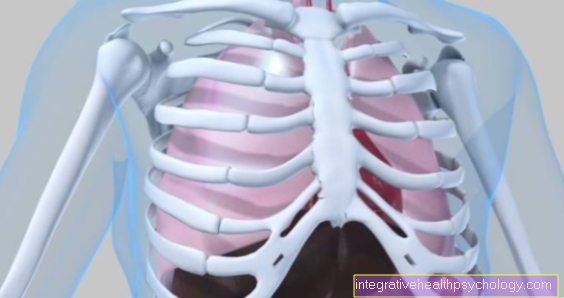Scapula lifter
Synonyms
Latin: Levator scapulae muscle
English: levator scapulae muscle
Synergists: Trapezius
Antagonists: Rhomboideus major muscle
definition
The scapulae lifter (Musculus levator scapulae) is a narrow muscle that arises from the 1st - 4th cervical vertebrae and supports the descending part of the trapezius muscle. It belongs to the middle layer of the secondary back muscles and, as its name suggests, pulls the shoulder blade upwards.
course
Approach: Upper shoulder blade angle (Angulus superior scapulae)
Origin: Posterior cusps of the transverse processes of the 1st - 4th cervical vertebrae (Tubercula posterica the Processus costa transversarii)
Innervation: N. dorsalis scapulae, plexus cervicalis, C 3 - 5
function
The levator scapulae lifts the shoulder blade forwards and upwards and thus supports the function of the trapezius muscle. In addition, it supports the inclination of the neck to the same side and, in the case of tension on both sides, the laying back of the head on the neck (e.g. when observing the night sky).
common illnesses
The shoulder blade lifter connects the neck with the shoulder blade and often causes neck pain when there is tension. In addition, it is difficult to turn your head. Massages are helpful in this situation to loosen up the tense muscles.
Strengthening and stretching
The shoulder blade lifter is trained in the same way as the trapezius muscle.
The best way to specifically train this muscle is the following exercise:
- Shoulder raises
Here you will find detailed information on weight training
How is the muscle stretched?

In order to lengthen the shoulder blade lifter, the head must be tilted to one side. The arm on the opposite side can play a supporting role.
For more information on this topic, see stretching





























